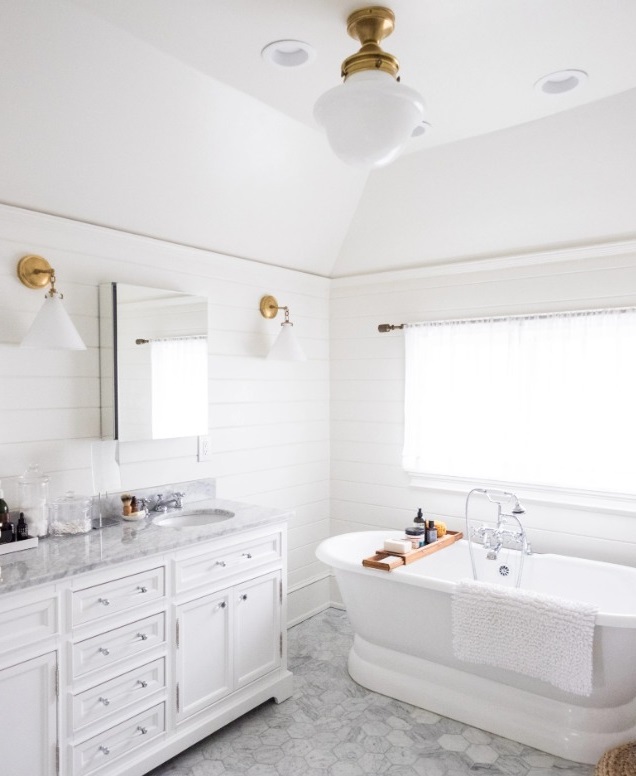When it comes to the practical matters, ceramic bathroom wall tiles would serve with a lot of benefits for you. But there are some other facts you need to know about this material before you choose which one to stick with. Other than that, it offers a wide range of options when it comes to texture and color.
Another interesting thing about ceramic is that this material often appears cheaper than porcelain. Besides, ceramic is lighter though. However, there are several cons you need to acknowledge about ceramic too. Since it is not as strong as porcelain could be, ceramic is also not the best surface for walking. It could turn very cold when the winter comes.
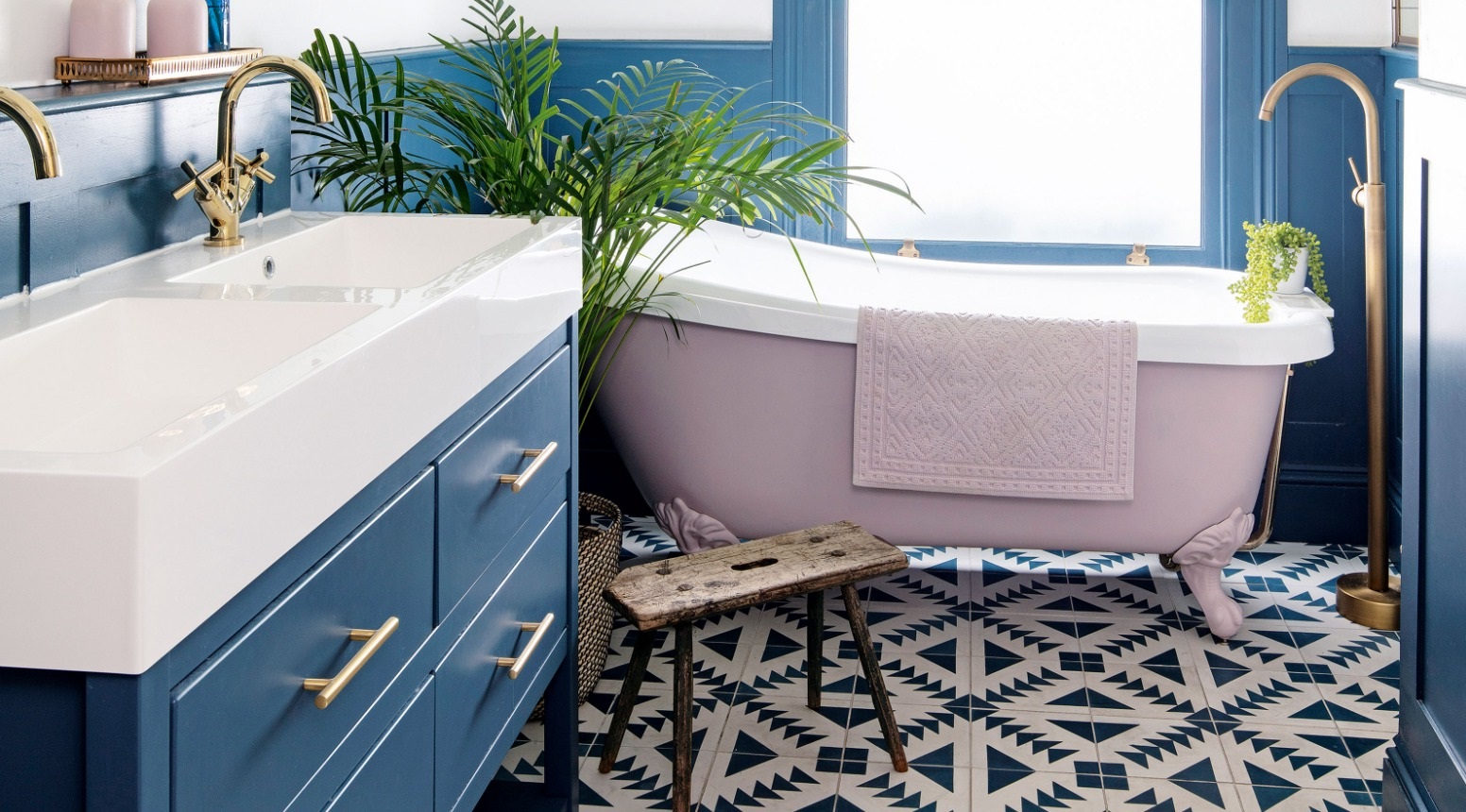
Basic things about ceramic tile
Ceramic tiles offer wide ranges of colors, textures, and shape. This material is generally made of white or red clay that later gets burned in the fire with a certain process. Some people consider porcelain as a family member of ceramic. However, we will exclude porcelain from the list.
Typically, ceramic tiles are priced less than USD 2 per square foot. If you use the high-end ceramic tiles, it could cost between USD 20 and USD 40 or so per square foot. Averagely, you can buy it around USD 8 per square foot.
The pros
Ceramic tiles are very affordable and available on various options. You can make it customized according to your need like for the soap dishes, chair rails, and many more. The process of making ceramic allows you to get the shape you like.
The cons
However, as we have mentioned earlier, porcelain is much stronger than ceramic tiles. It makes this material lacks in its strength. Sometimes the price defines the quality though.
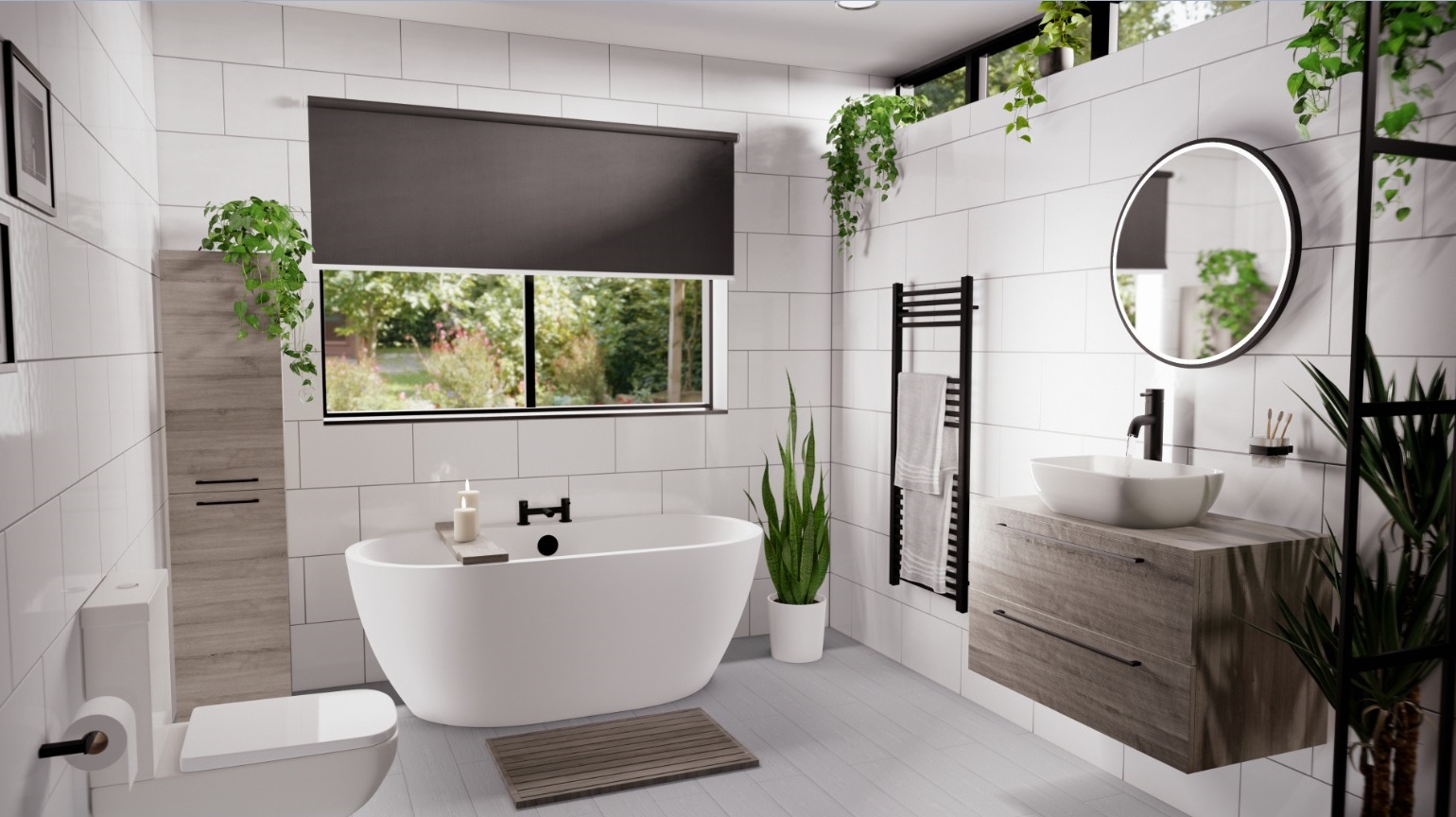
Maintenance
If you will choose to use ceramic tiles for your bathroom or other rooms, make sure that you purchase the strong one. The simplest way to test it is by buying a sample and cleaning it with nylon scrub brush in soapy water. This test could tell you if the ceramic is the best in quality or not.
Installation
Installing ceramic tile does not need drama since you can make it as a DIY project. Other than that, most ceramic tiles on the market nowadays have the arrow on its back. If you do that on the DIY project, make sure you line the tiles up the same way to get the right look. So, this is anything you need to know about ceramic bathroom wall tiles.
This is How Tiles and Ceramics are Different
Many people think that tiles and ceramics are the same because they are both used as floor coverings. Additionally, there is often confusion about the distinction between the two. Surprisingly, tiles and ceramics are often considered synonymous, although they actually have different meanings. Even though they are different, there is a connection between the two, leading to misconceptions about the terms.
Ceramics are made of fired clay mixed with other minerals, while tiles refer to a mixture of sand, cement, and other materials used for floor covering, usually in a rectangular shape. Despite being similar, there are numerous differences, advantages, and disadvantages between these two types of floor coverings.
To avoid confusion, it’s essential for Mulia Friends to be aware of the characteristics of ceramics and tiles so they can easily decide which one to choose for their home. Here is an overview of the differences between the two:
Tiles and ceramics are commonly used materials for flooring in homes. Both can enhance the durability and ease of cleaning the floor, as well as come in various sizes, shapes, and patterns to improve the aesthetics of a home.
Both tiles and ceramics undergo finishing processes to increase durability, smooth the texture, and make them equally easy to clean. At first glance, they may appear quite similar, but in reality, they differ in terms of manufacturing materials, techniques, durability, strength, price, and properties. Therefore, careful consideration is required when choosing between these two types of floor coverings due to their respective advantages and disadvantages.
Tile floor bases are made of clay or stone mixed with fine sand and feldspar, then fired at a higher temperature than ceramics, resulting in stronger durability compared to ceramics in general.
On the other hand, ceramic bases are primarily made of red clay, brown clay, or white clay. The firing process is used to reduce the clay’s water content and strengthen it. Additionally, a glaze liquid is applied to shrink the pores of the ceramic.
The differences in production techniques are quite apparent. Tiles are made with a dust pressing system, resulting in denser, stronger, and more durable outcomes compared to ceramics. Conversely, ceramics are made with a mixture of clay and other materials, stirred, and then molded into squares of a specific size.
The method and materials used in the installation process also differ between tiles and ceramics. Both generally require adhesive for installation. Tiles are installed using a stronger polymeric binder to ensure a flat and neat appearance. The adhesive is easy to use, as it just needs to be mixed with water and can be applied immediately. This adhesive is also useful when installing new tiles on top of old ones (tile on tile) or in frequently used areas.
The purposes of tiles and ceramics also differ. Porcelain tiles, made using a dust pressing method, have a harder texture, making them suitable for high-traffic areas like kitchens. Conversely, ceramics are suitable for rooms with lower activity intensity, such as living rooms, to ensure their longevity.
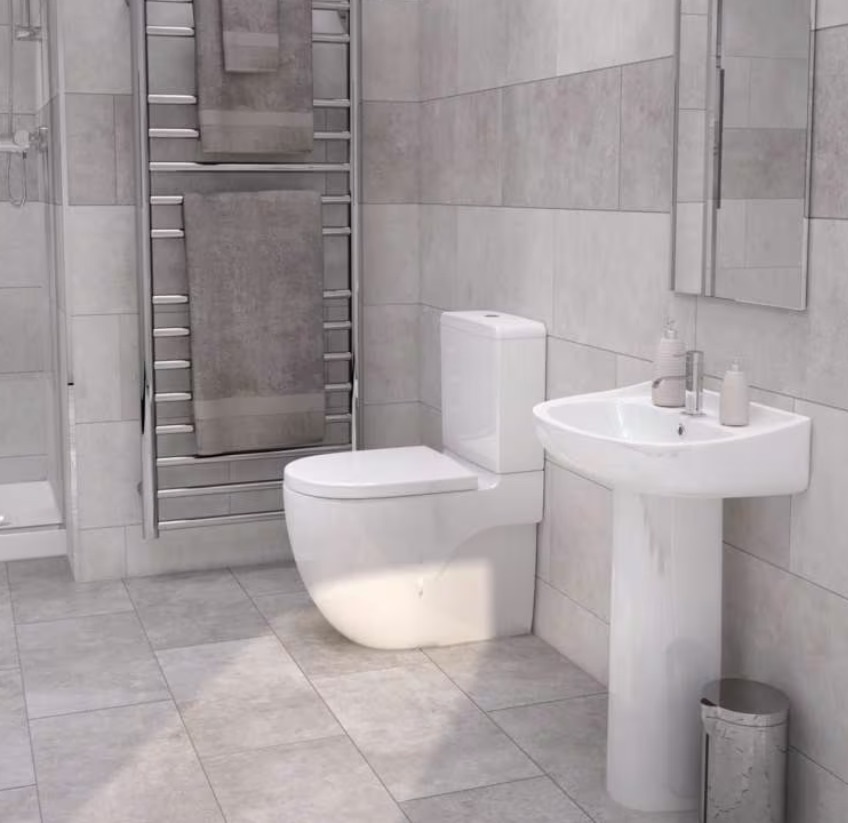
Resistance Level of Both Materials
Both ceramics and tiles have different levels of resistance, in addition to their different uses. Porcelain tiles are made from white clay and formed using pressing techniques, resulting in a soft but very dense texture that makes them stronger and more durable. On the other hand, ceramics, which are only printed on ordinary molds and not formed using pressing techniques, have less strength compared to porcelain tiles, making them more susceptible to cracking or breaking.
Differences in Appearance
When it comes to appearance, tiles differ from ceramics in several ways. Ceramics often have solid and monotonous designs and colors, unlike tiles, which offer more variety in terms of design and materials. Therefore, tiles are more flexible and attractive than ceramics. Ceramics are best suited for indoor use on floors and walls, while tiles are better for outdoor spaces as they are more resilient.
An example of ceramics that you can find at Mulia Ceramics is the Super White, which features a solid white color with a glossy finish. On the other hand, one of the tile options available is Sharlotte Gray, both of which can be found in the Spectrum collection. For premium quality tiles and ceramics, you can visit the product page at Mulia Ceramics.
Properties of Tiles and Ceramics
The difference between tiles and ceramics lies in the nature of these two flooring materials. Ceramics are generally more prone to peeling, cracking, and being porous. They are, however, more stain resistant and easier to clean due to their smooth surfaces and homogeneous color. Porcelain tiles tend to be more expensive and harder to cut compared to ceramics. Additionally, porcelain tiles have a lower water absorption rate and are more resistant to rain, water, and ice, which prevents stains and damage. Conversely, ceramics have a higher water absorption rate and are more prone to stains if continuously exposed to water.
Water and Temperature Resistance
Tiles have small pores, making them waterproof and suitable for outdoor use as they are more resistant to direct exposure to environmental impacts such as rain and hot weather. On the other hand, ceramics are highly susceptible to water and humidity due to their large pores, making them prone to breaking and damage. However, ceramics are resistant to high temperatures, although not as strong as tiles.
Now you have the information about the differences between tiles and ceramics. Hopefully, this will help you carefully consider which type of flooring best fits your criteria, and gain a better understanding of these two materials so you no longer feel confused when distinguishing between them.
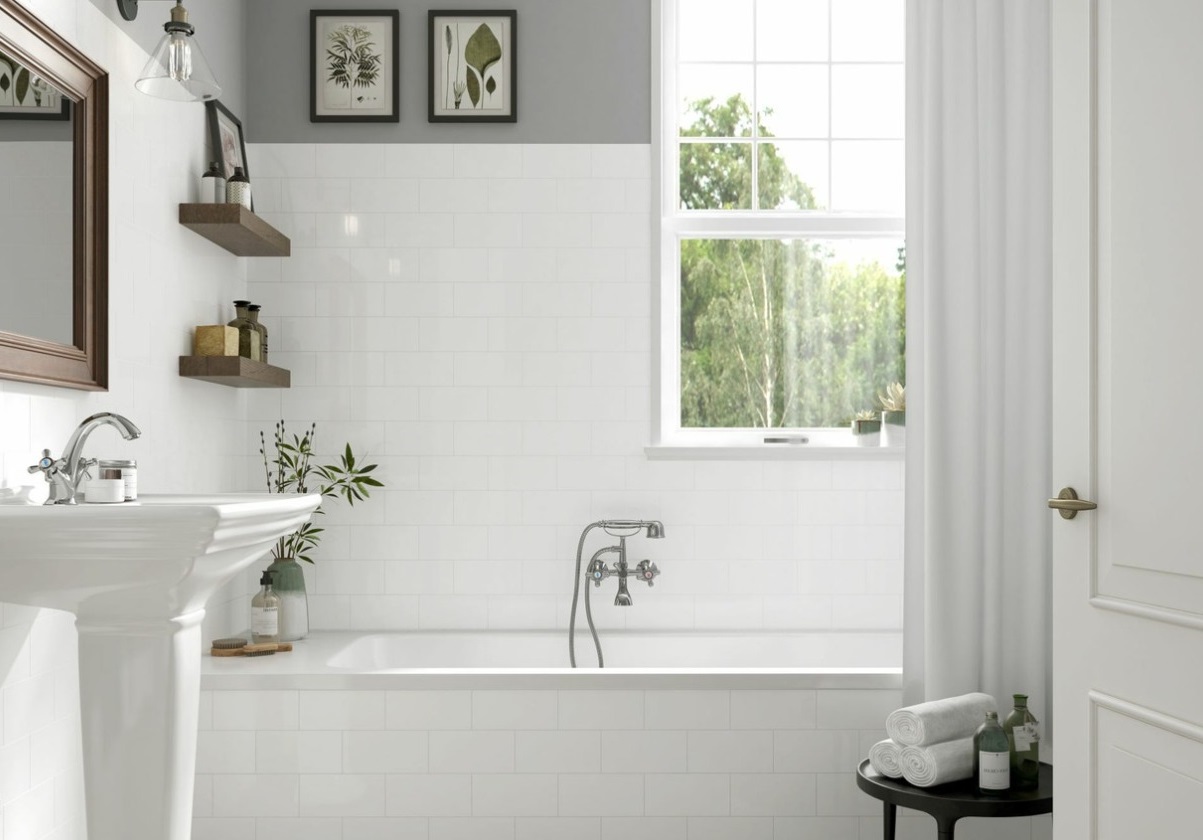
WHAT ARE CERAMIC TILES?
Ceramic tiles, typically thin (although nowadays they can be up to 20 mm thick), are made from clay, silica, dyes, and various other raw materials. These individual materials are ground, pressed, or compacted using different procedures, and then subjected to one or more heating and cooling processes. This results in different products with different characteristics, although the most common type is “fired clay”.
Some of the most well-known types of ceramic tiles are stoneware tiles or porcelain stoneware tiles. The main differences between these types lie in their porosity (water absorption through the tile) and hardness. Based on these characteristics, they are used for flooring—both indoors and outdoors—or as wall and facade coverings.
Homeowners often choose ceramic and porcelain tiles due to their durability, timeless aesthetics, and relatively affordable price. These clay-based materials are less fragile than natural stone and are more cost-effective as they don’t have to be mined from the earth. Porcelain and ceramic tiles have many similarities, such as being man-made materials, but they also have some notable differences, including porosity, maintenance, and cost. We’ll consider the advantages and disadvantages of each material to help you decide which is the better choice for your home project.
The Manufacturing Process of Ceramic Tiles
Ceramic tiles are slim layers of clay, water, or other inorganic substances, solidified at high temperatures in a kiln and generally coated with some type of glaze. Ceramics are recognized for their resilience and comparatively low price in comparison to natural stone.
Ceramic tiles are available in various hues and patterns for flexible use and a modern appearance. The application of glaze results in vivid colors and a smooth, glass-like surface. Tile dimensions vary from small mosaics to large sizes and are obtainable in every conceivable shape. Select from almost any installation design and incorporate trim pieces, borders, and inlays to highlight decorative aspects. Blend and match colors and sizes for visual appeal, or replicate the same style on walls, countertops, or showers for a unified appearance.
What Are the Ideal Uses for Ceramic Tile?
Ceramic tile is an excellent option for numerous areas of the home, whether it is for walls, floors, countertops, or backsplashes. It resists moisture, stains, and doesn’t harbor bacteria or odors. Because it often remains cool, it is a suitable flooring choice for rooms that tend to become warm during the hotter months. Ceramic tiles are rated from 0 to 5 based on their hardness on the PEI scale, which measures the hardness and durability of tile materials. Tiles rated from zero to 2 are appropriate for wall tiles, and a rating of 3 is suitable for most residential applications.
Scale of Hardness Ratings
PEI Rating Class 1 (no foot traffic): Suggested for wall use only in residential and commercial settings
PEI Rating Class 2 (light traffic): Suitable for wall use and bathroom flooring applications
PEI Rating Class 3 (light to moderate traffic): Recommended for countertops, walls, and floors where typical foot traffic is anticipated
PEI Rating Class 4 (moderate to heavy traffic): Advisable for all residential applications and medium commercial and light institutional use
PEI Rating Class 5 (heavy to extra heavy traffic): Recommended for all residential applications as well as heavy commercial and institutional settings
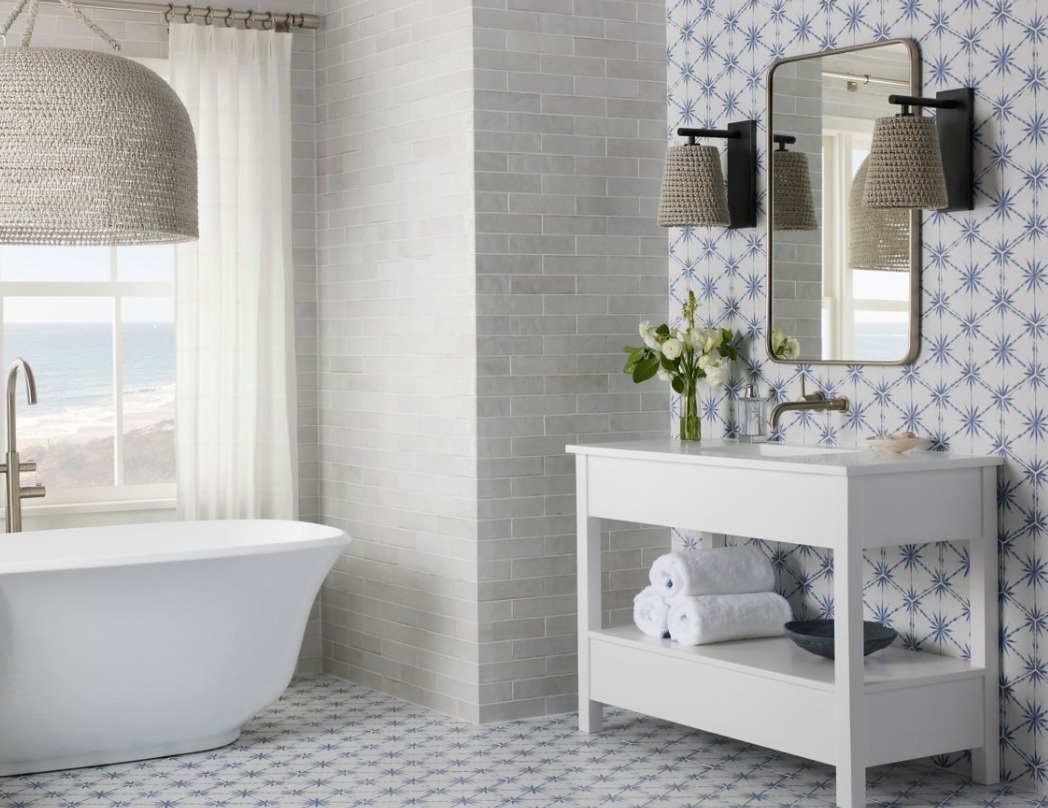
Advantages of Ceramic Tile
Ceramic tile has a long lifespan and can endure significant wear and tear, with the ability to withstand water and foot traffic. Ceramic tile is also easy to install for individuals who prefer to do it themselves. Unlike porcelain, which is extremely challenging to cut, ceramic is softer and can be cleanly cut with a basic tile cutter. This is a flexible choice if you are seeking a tile that can be used in multiple areas of your home.
Disadvantages of Ceramic Tile
Ceramic tile is less durable than porcelain, so you may consider installing ceramic tile in areas with low foot traffic and surfaces that are not subjected to extensive wear and tear. Ceramic is also more porous than porcelain, which means it absorbs liquids more readily. “Porosity ratings are highly significant,” McCoy states. “Porosity is the proportion of voids (or air pockets) to solids in a tile, which impacts the percentage of water absorbed into the tile.” Higher porosity indicates that ceramic tile is more prone to staining and moisture absorption. Consequently, ceramic tile necessitates more frequent cleaning than porcelain. If your budget permits, you may want to opt for porcelain in areas susceptible to moisture.
Ceramic tile can vary in size and color from one tile to the next, which is crucial for homeowners seeking to maintain a consistent appearance. Additionally, it is worth noting that without radiant heat underneath, ceramic tile may feel cold beneath your feet and uncomfortable to stand on for prolonged periods.
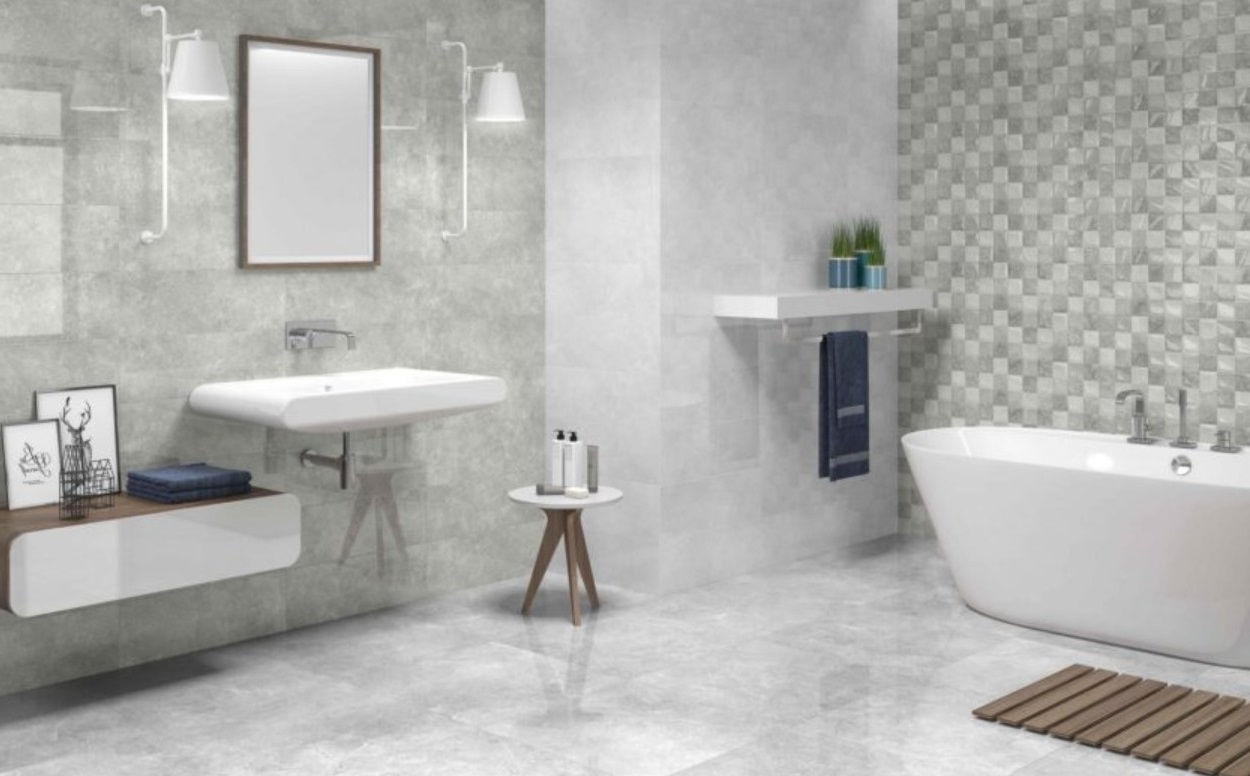
Ceramic Tile Cost
Compared to other types of tiles, ceramic tile costs are relatively inexpensive, ranging from $1 to $35 per square foot, making it a budget-friendly option.
How to Clean Ceramic Tile
Cleaning ceramic tile is a simple task. To prevent scratches, refrain from using abrasive materials like steel wool and scouring pads. A steam mop, such as the Shark Hard Floor Cleaner, is a suitable option due to ceramic tile’s ability to withstand high heat.
Porcelain
How Porcelain Tile Is Manufactured
Technically, porcelain is a form of ceramic, but it is crafted from a blend of high-grade clays and fired at a higher temperature than ceramic, resulting in a harder, denser, more durable, and less porous material.
There are two primary varieties of porcelain tile. Translucent porcelain features color and texture throughout the entire tile, concealing any cracks or scratches. It is robust and lacks a glaze that can wear off, making it suitable for floors, walls, and countertops. Fully glazed tiles are coated with a hard finish or wear layer, typically in various colors and designs, making them dense and resilient.
What Are Porcelain Tiles Best Used For?
Porcelain tiles are a popular choice for bathroom flooring due to their durability and low porosity, providing superior stain and water resistance compared to ceramic tiles. They are also a suitable option for high-traffic areas like kitchen floors and countertops, as they are much more hard-wearing than non-porcelain ceramics. Porcelain is a resilient synthetic material that can be utilized in high-traffic spaces or children’s bathrooms, as it does not deteriorate or stain over time like natural stone.
Porcelain provides excellent heat retention, making it ideal for direct floor heating to keep feet warm on chilly evenings. Additionally, porcelain offers unparalleled design versatility, as it can emulate various natural stones such as granite and limestone, as well as feature designs inspired by exotic locations and fashion trends, including surfaces resembling leather, fabric, or even animal prints.
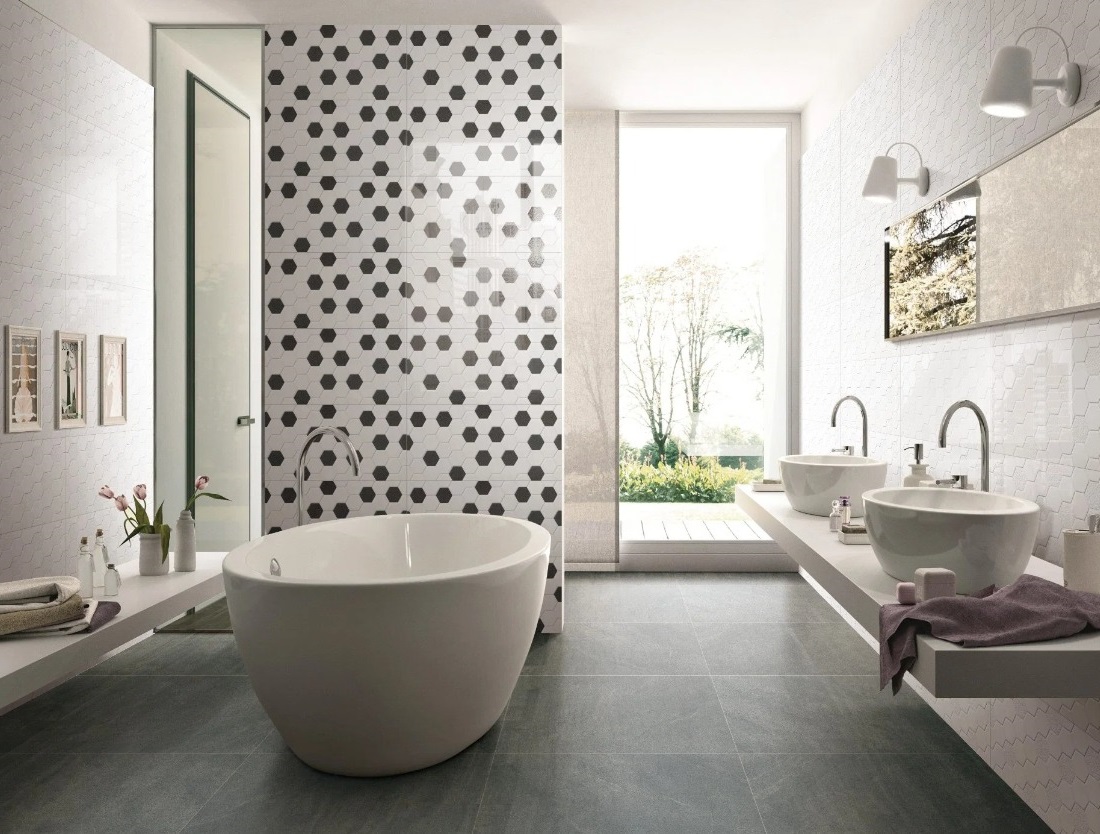
Porcelain Tile Advantages
Due to its durability, porcelain tile will endure for many years and is capable of withstanding heavy foot traffic. Its low porosity makes it resistant to splashes, stains, bacteria, and odors.
Porcelain Tile Drawbacks
While porcelain is more costly than ceramic and more economical than natural stone, its durability can pose challenges during installation, as it is very difficult to cut and requires special tools. Achieving clean cuts and precise installation may necessitate hiring a professional rather than attempting a DIY installation. Moreover, porcelain tile necessitates a modified installation compound to adhere it to the substrate.
Porcelain Tile Cost
Priced at $3 to $10 per square foot, porcelain is reasonably priced, but the cost will increase with installation.
How to Clean Porcelain Tile
Cleaning porcelain tile is straightforward. Simply sweep or vacuum once or twice a week and use a porcelain-specific cleaner monthly. Avoid using abrasive materials like steel wool and scouring pads, as well as cleaners containing bleach or ammonia. Unglazed porcelain requires more frequent cleaning.
What’s the bottom line?
While both ceramic and porcelain tiles are durable and cost-effective options, your decision will hinge on the installation location, traffic flow in the area, and your budget. If you seek a more versatile style, porcelain tiles are the superior option, while if cost savings are a priority, ceramic tiles are a viable choice. Regardless, both porcelain and ceramic tiles are excellent choices for your upcoming remodeling project.
